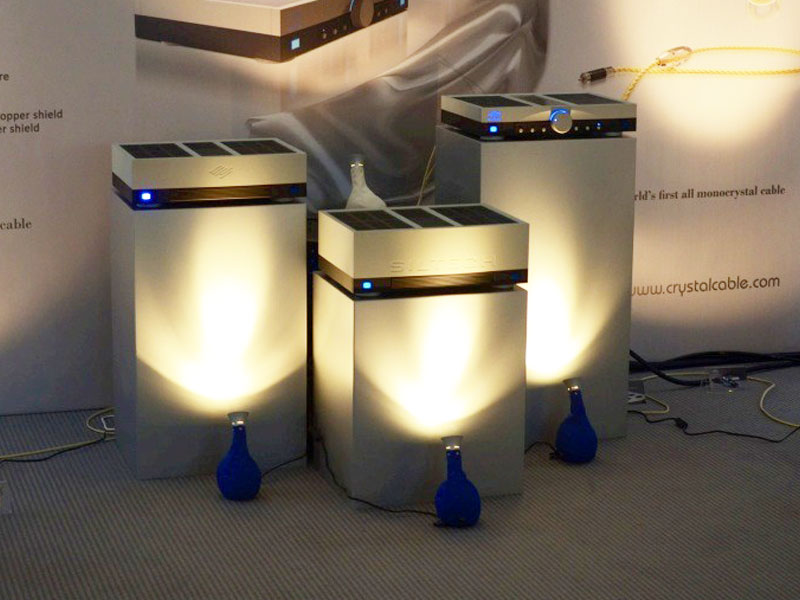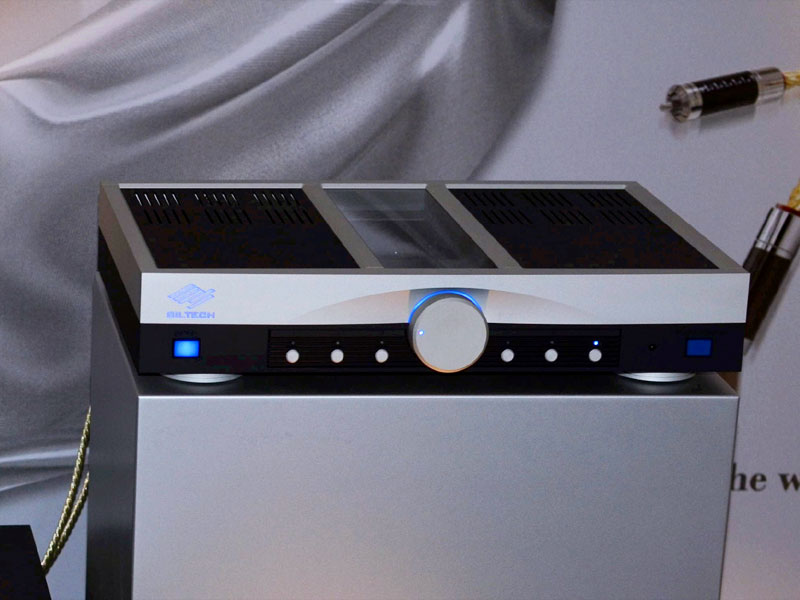High End 2012

Sometimes it seems like there’s nothing
new under the sun, the hi-fi industry simply revisiting the past and reinventing one wheel
after another. Recent years have witnessed the re-emergence of direct-drive and
idler-drive turntables, field-coil drivers and open baffles, to name but a few significant
blasts from the past. But occasionally someone does something sincerely different and
innovative, offering genuine potential advantages in a realm or product category we’d
previously considered all but sewn up. In this case, that company is Siltech, and it will
come as a surprise to many that the advance comes in the realm of amplification.
This is not so surprising if you consider
that amongst all cable companies, Siltech has arguably the most technology- and
materials-based justifications for its products, with sound technical backup to underpin
it all. Nor is this Siltech's first foray into amplification, with a power amp some years
ago (that developed a cult following) and more recently -- and pertinently -- the C1 line
stage. This battery-powered tube design was beautifully crafted, offered superb technical
and noise performance and a thoroughly modern appearance. But it didn’t exactly light
any fires, partly because of its extremely limited overall gain when compared to the more
popular competition. It simply didn’t sound as powerful, while users were reluctant
to wind up the volume past the familiar 10 o’clock point.
Well, all that has changed. The C1’s
partners in crime have duly arrived and promptly rewritten the rule book. Readers will
have spotted that the system sports three boxes, but this is no line-stage and monoblock
setup. In fact, the eagle-eyed amongst you might well have noticed that the two additional
boxes are different sizes. In fact, the stereo power amp consists of an interstage (or
voltage gain-stage) amplifier, and a matching current amplifier. It’s not a topology
we’ve ever come across before, but Siltech have an interesting argument to support
the approach -- and backed it up with a pretty convincing demonstration.

This is how it goes. Most amplifiers start
with an input signal of around 2 volts, sometimes as much as 6 volts, and attenuate it by
90% before then reamplifying it to drive the speakers. Siltech apply virtually no
attenuation to the signal (hence the lack of gain in the line stage). The V1 interstage
amplifier (another battery-driven tube unit) then applies voltage gain, before passing the
signal to the P1 AC powered current stage. The result is actually less overall
amplification of the signal but an increase in dynamic range of between 10 and 16dB,
depending on the gain setting of the V1, as a result of the far lower noise floor. Wired
throughout with Siltech’s best conductor technology and employing carefully chosen,
low-noise NOS tubes, the circuit is feedback free and has a battery life of around 15
hours continuous play before recharging is required. There is a "play while
charging" facility, but part of the demonstration was to show just how the sound
improved once the first two boxes in the chain were entirely isolated from the AC supply.
Factor in a 300Wpc power rating that doubles
as the impedance halves and you have one potent (and seriously expensive) amplifier. With
the C1 weighing in at €28,000, the V1 adds another €9000 and the P1 a further
€18,000, for a grand system total of €55,000. But bear in mind that the V1 can
drive multiple P1 stages, allowing the really well-heeled to save some shekels in massive,
multi-amped setups.
How did it sound? The advantages of the
140dB of available dynamic range were immediately apparent. In a system rounded out with a
dCS Puccini/U-Clock front-end and a pair of the smallish, three-way Crystal Cable
Arabesque Three floorstanders built into aluminum cabinets similar in footprint to the
Mini stand-mounts, the amps generated almost horn-like dynamics and musical presence --
without any of the severe tonal compromises demonstrated so effortlessly by the many
actual horn systems on show. The whole setup was strung together with Crystal
Cables’s new Absolute Dream interconnects and speaker cables and delivered the sort
of transient impact and black, black backgrounds that really bring recordings to life.
The SAGA (Structural Amplifier Gain
Architecture) concept, as Siltech calls it, certainly seems to be much more than just a
gimmick, with genuine technical and musical advantages -- albeit at the cost of an
additional box in the chain. The amps will be arriving for review at the end of this
month, so we’ll offer a more considered assessment shortly, but for now, this story
is definitely one to follow. |